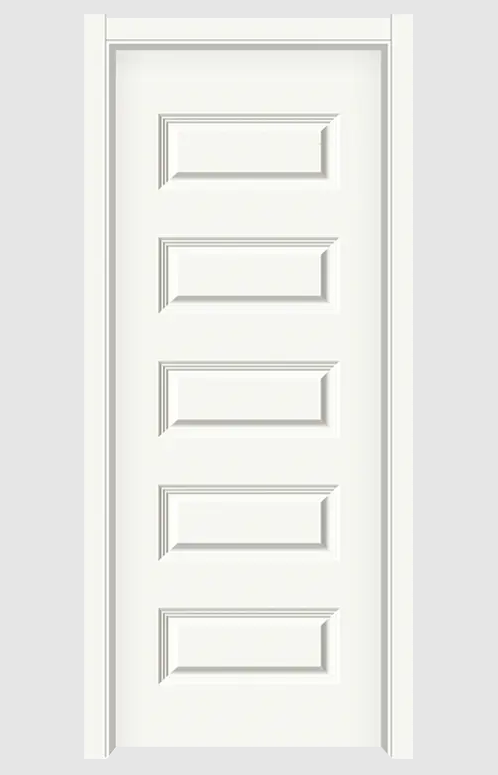White primer doors have become a common choice in both residential and commercial interior design due to their unique combination of practicality and adaptability. These doors are coated with a special primer layer that provides a smooth base for painting, allowing for greater customization while offering several notable benefits.
One of the main advantages of white primer doors is their versatility in finishing options. The primer coating creates an even surface that readily accepts various types of paint, from water-based to oil-based finishes. This feature allows homeowners and designers to select colors and finishes that match different décor styles or change them over time with relative ease. Whether aiming for a matte, glossy, or textured look, white primer doors serve as an excellent canvas.
Another important characteristic of white primer doors is their contribution to improved paint adhesion. The primer acts as a preparatory layer that enhances the bond between the door surface and the paint, reducing issues such as peeling or flaking. This ensures that the paint finish remains intact and maintains its appearance for a longer period, minimizing the need for frequent repainting and maintenance.
White primer doors also offer a clean and uniform appearance before painting. Unlike raw wood or uncoated surfaces, these doors come with a consistent base color and texture, which helps to highlight any imperfections that might need attention before the final paint application. This quality can be especially beneficial in professional settings where the final look must meet certain standards.
In addition to their surface benefits, white primer doors often have good dimensional stability. The primer layer helps to seal the door material, protecting it against moisture and environmental changes that can cause warping or swelling. This stability is important for maintaining proper door function and fitting over time, especially in areas with fluctuating humidity or temperature.
From a manufacturing perspective, white primer doors allow for efficient production and finishing processes. The pre-primed surface reduces preparation time for painters and contractors, speeding up installation and finishing schedules. This efficiency can be a valuable factor in large-scale projects or renovations where timelines are critical.
Moreover, white primer doors can be produced using a variety of materials, including solid wood, MDF, or engineered wood products. This flexibility means that buyers can select doors based on budget and performance requirements without sacrificing the benefits of a high-quality primer finish.
In summary, white primer doors offer several practical advantages, including versatility in paint application, improved paint adhesion, consistent surface quality, and protection against environmental factors. Their adaptability to different finishing styles and materials makes them a widely chosen option for interior doors, balancing aesthetics and functionality.
